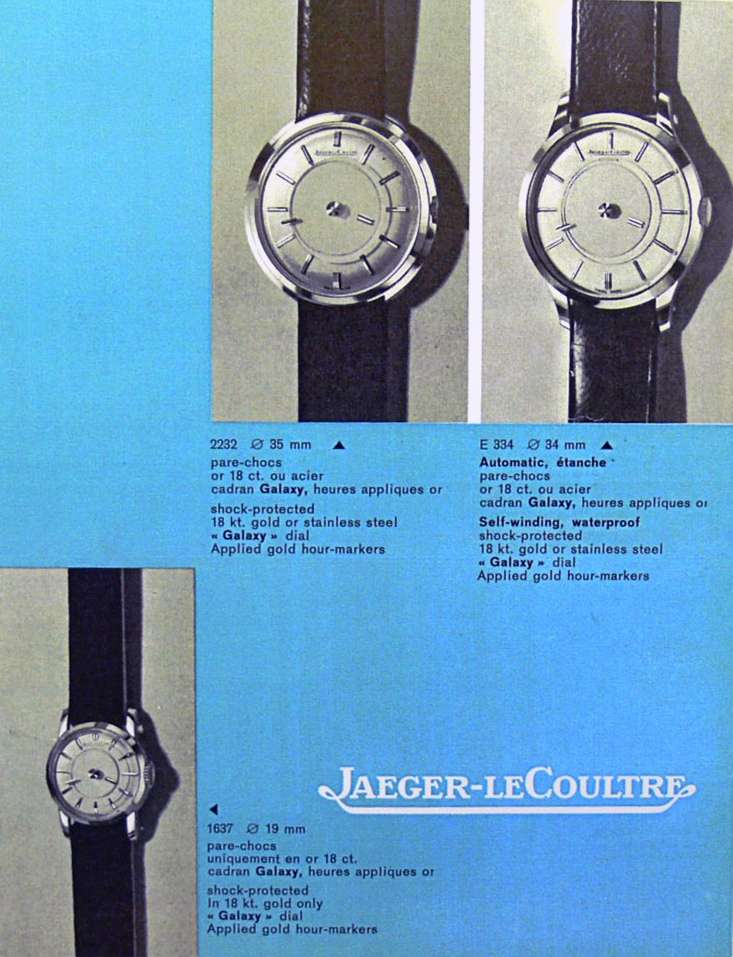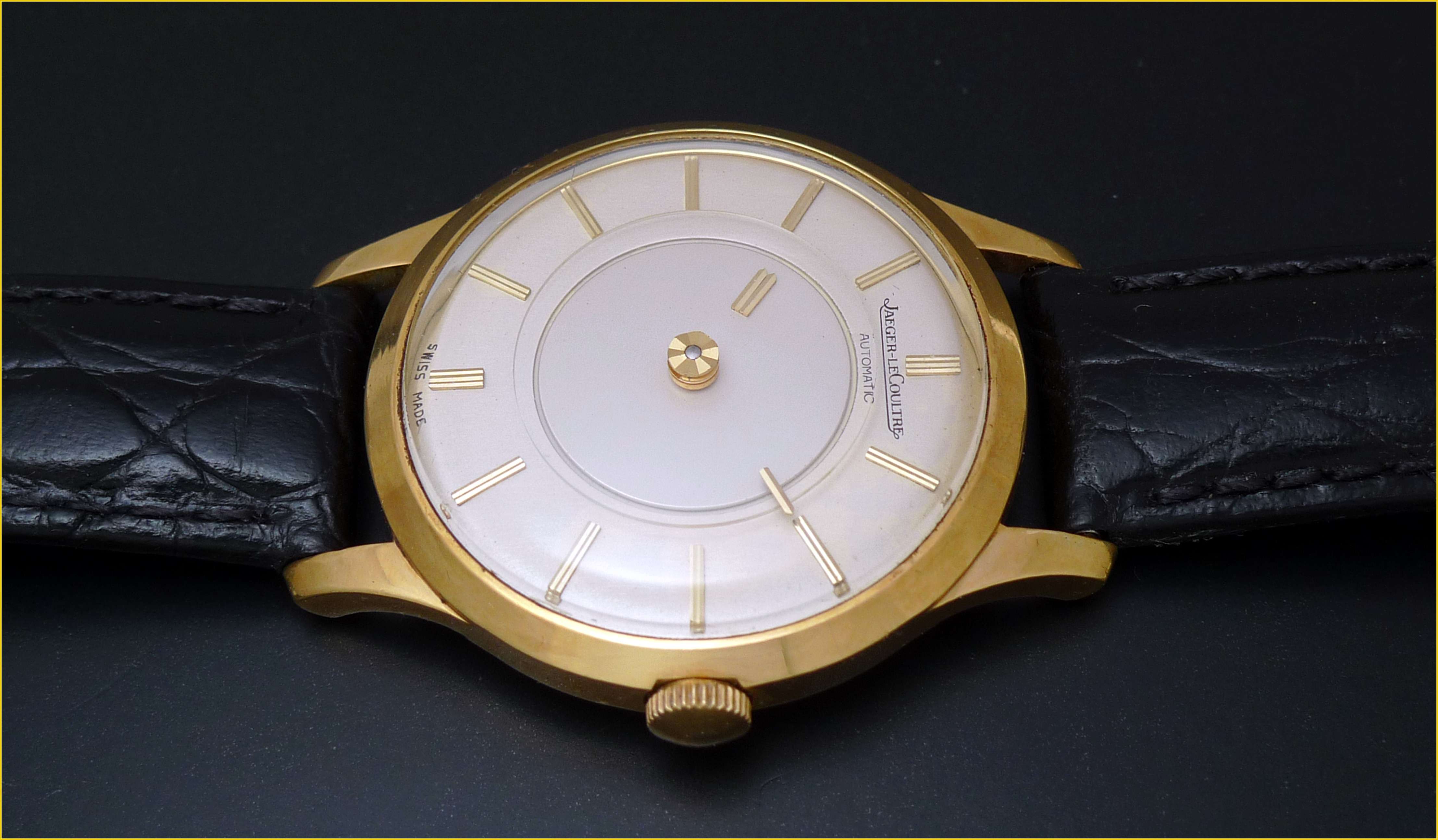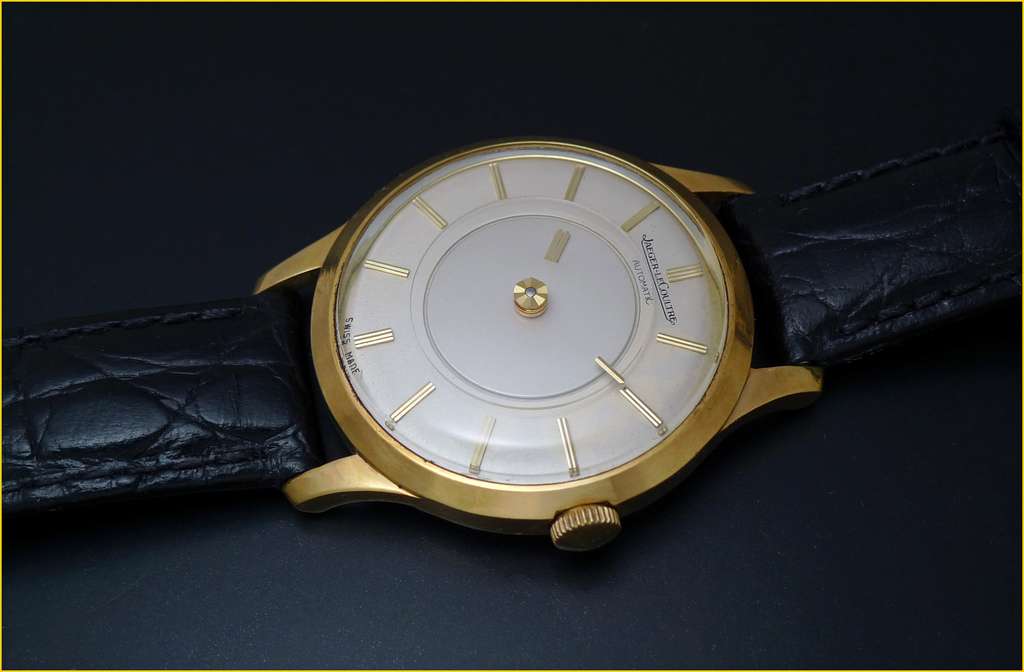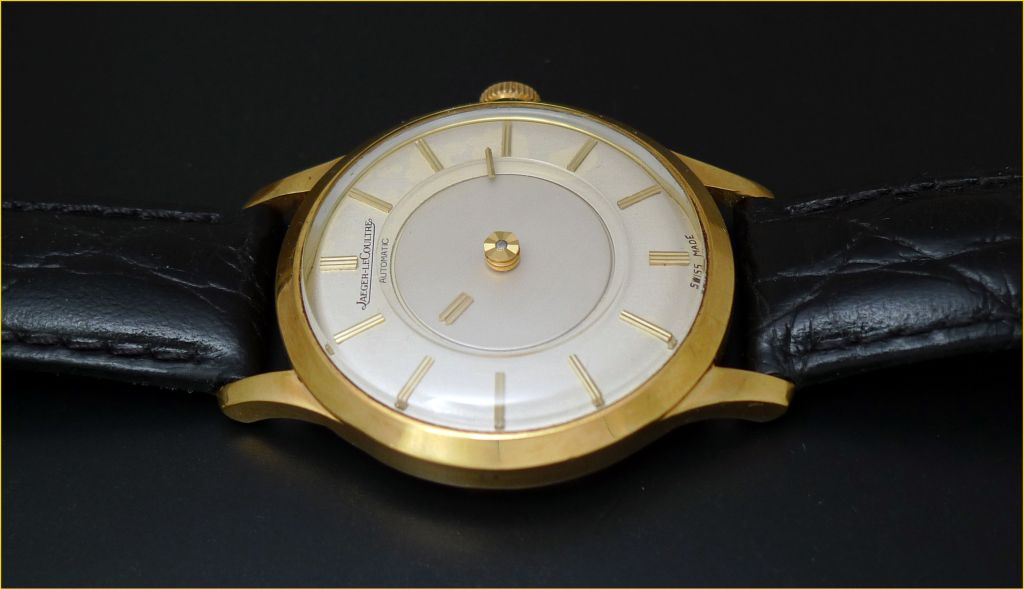
Jaeger Lecoultre Mystery or Galaxy: A review on a superb watch.
amanico


To examine the " Galaxy " is a tought task. As often with Vintage watches, and specially with Vintage JLC watches, you think you " surrounded " the topic, and another detail / information makes you realize that you still have to learn
To review the " Galaxy " is a tough task.
As often with Vintage watches, and specially with Vintage JLC watches, you think you " surrounded " the topic, and another detail / information makes you realize that you still have to learn a lot on the topic.
The " Galaxy " is not an exception to the rule.
In the Fifties, the " Mystery " or " Galaxy " was adopted / shared by some brands of the Longines Wittnauer Group ( Basically: Lecoultre / Wittnauer / Vacheron Constantin / Longines ) .
Here is a Longines " Mystery " found on the net ( sorry, don't know who to credit ) :
Vacheron released such a watch, using a Lecoultre movement ( Cal 480 ) and a Lecoultre dial, too.
Here, a Vacheron - LeCoultre Galaxy I found on the net: Lecoultre signed dial and movement / Vacheron Constantin - Lecoultre signed case. ( Sorry, I don't know who to credit for ) :

Jaeger Lecoultre offered their own vision of such an original and poetic watch, as you can see on the 1960 and 1961 catalog.
- 1960 Catalog, which allow you to learn that the same dial was used in different cases.

- 1961 Catalog, featuring the Galaxy, along with two others pearls of the moment, the E 329, and the Futurematic " Porthole " Ref E 502.
Here, no hands, nor diamonds, but a sober, clean, very elegant approach of the style, with a pair of " heads " without hands.
The reference I want to introduce you is one of the rarest, if not THE rarest: The Reference E 334.

1/ The case:
The informations about the size of the case are a bit contradictory:
In the 1960 JLC Catalog, it is written that the case is 34 mm big, while on the 1961 catalog, it is mentionned that the case is 35 mm big.
As well as the material of the case: In the 1960, it is said that the E 334 is available in stainless steel or in gold, while on the 1961 catalog, this reference is available in 18 Kt gold only.
Hence, three hypothesis to explain these contradictions:
OR, the reference was first in 34 mm and avalaible in two metals ( gold or stainless steel ), then the case received an evolution ( 1 mm bigger the year after and only in solid gold ).
OR, there was a mistake on the 1960 catalog.
OR, the watch was planned so, but never released, in the terms of the 1960 catalog.
I never saw in the flesh, nor in pictures, this reference in stainless steel, and when I had the opportunity to see the E 334 in the flesh, the case is 35 mm big, not 34 mm.
But that deosn't mean that a smaller version didn't exist, also in stainless steel, and I can be wrong.
I would be very pleased to learn more about this watch.
The case of the E 334 looks very familiar to a Memovox fan, as it seems to be very close to the E 858, in size ( 35 mm ) in the shape of the lugs ( long and straight ) and of the bezel.
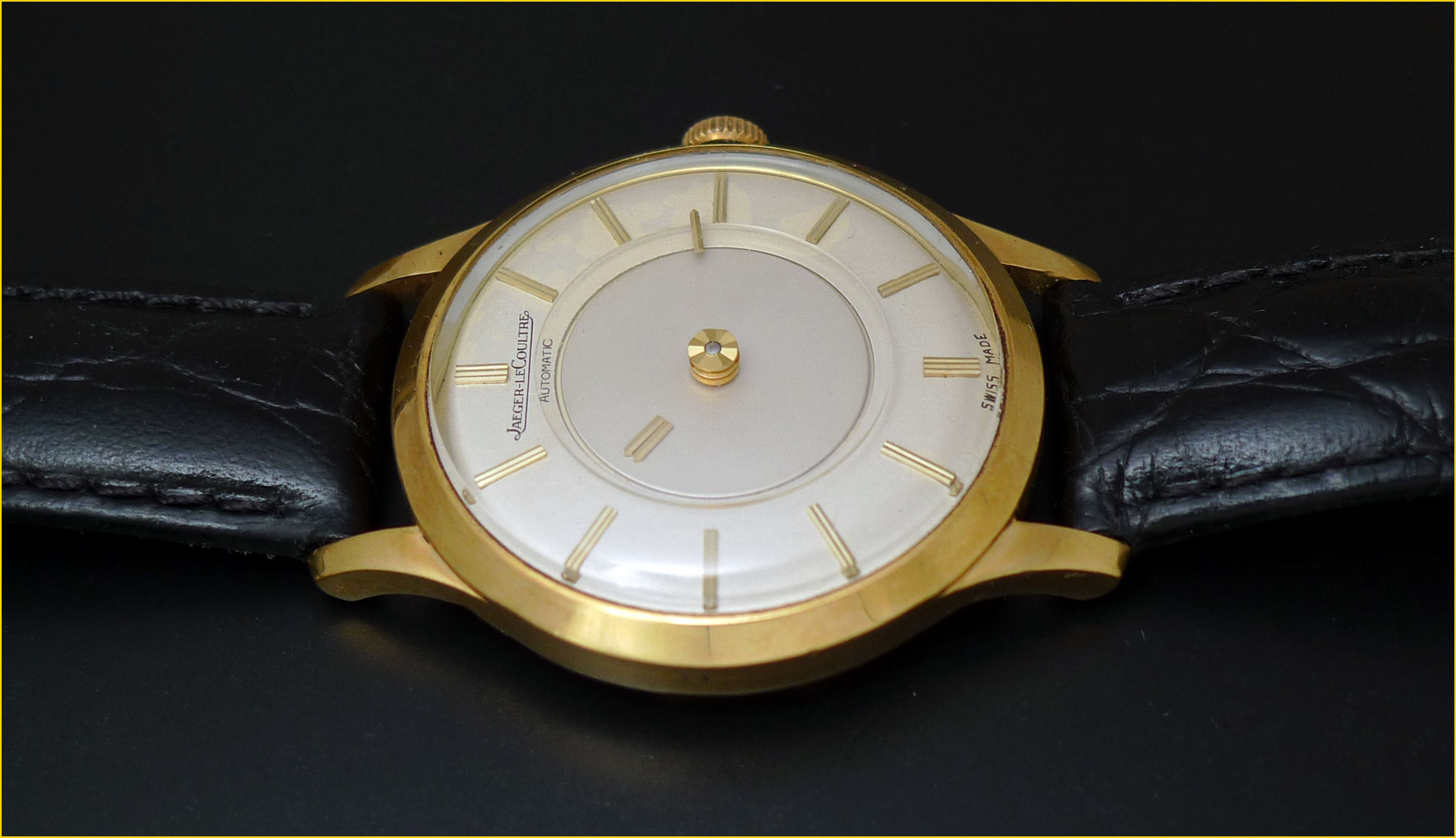
The proportions are conform to the idea we have of a dressy and elegant watch, as the thickness is reasonably held to a small 9 mm.
The crown is perfectly sized, and allows a pleasant use, when winding the watch:
The case being, as suggested by the Reference, waterproof, the case back is screwed, bearing on the outside part the case number:

... While the inside part of the case back is not signed, but bears the indication that the watch is made of solid gold, and the hallmarks.

2/ The Dial:
This is the part of the watch which makes all the originality of the watch, indeed.
Its very pure layout, almost minimalist, makes echo to the spirit of this elegant watch.
Thin and long gold applied hour markers, located each 5 minutes, shorter and larger at 6 and 12 o' clock, no minute indexes, here, but two gold heads:
One large and short, which indicates the hours, the other, longer and thinner, which reaches the hour markers and shows the minutes.
Heads, no hands, satellites turning around a golden pivot located at the very center of the dial.
Galaxy ... Satellites, you get the idea.
This dial is just fascinating and offers another way to read the time, a poetic way, should I say.
Here is the " mystery " of the Galaxy dial:
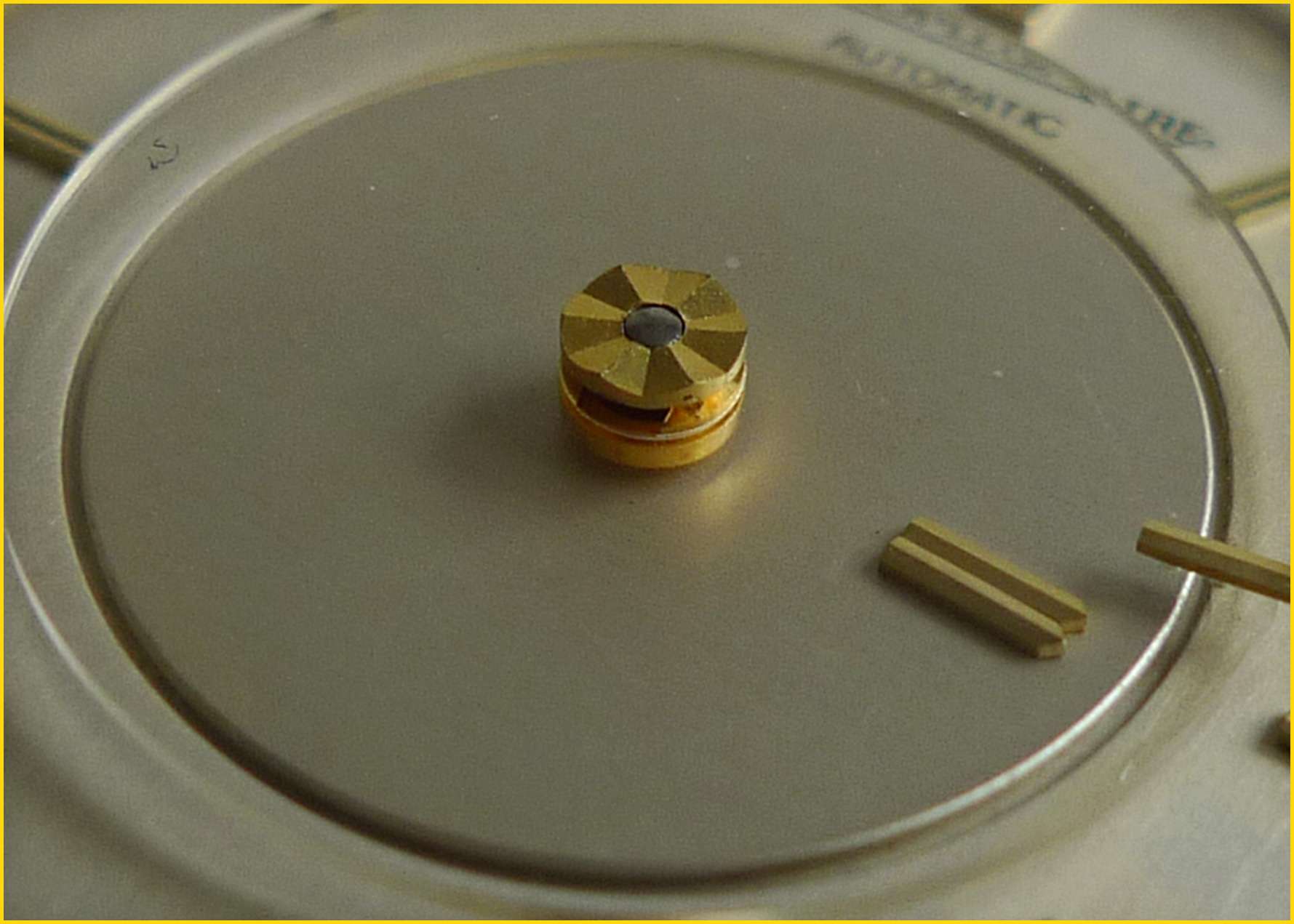
Two disks: The " Hour Head " is put on the lower disk, while on the upper one, which is made of plexy, the " minute Head " is installed, which gives the feeling that both of these heads are floating all around the dial.

Two disks: The " Hour Head " is put on the lower disk, while on the upper one, which is made of plexy, the " minute Head " is installed, which gives the feeling that both of these heads are floating all around the dial.
Smart!
3/ Movement:
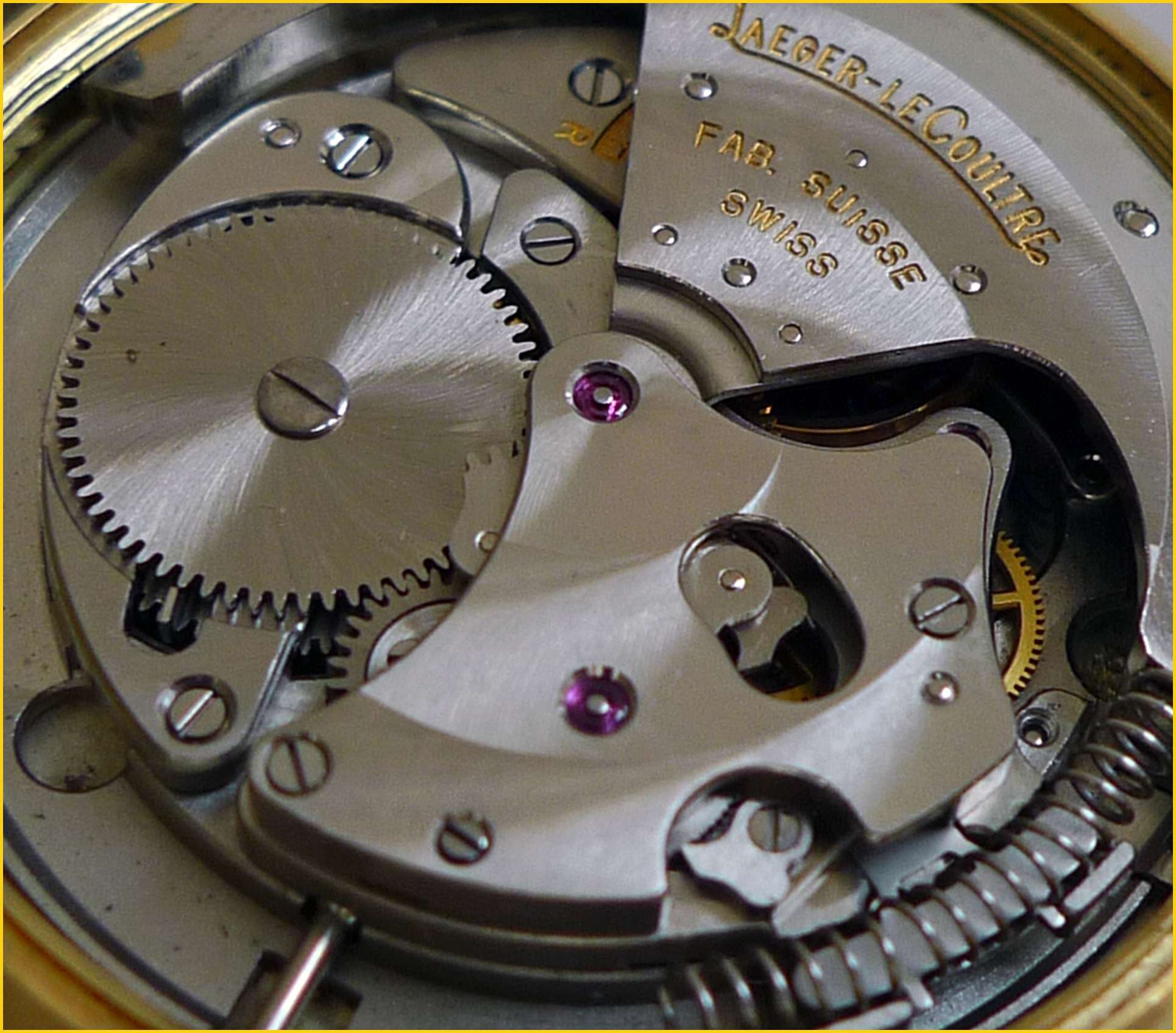
This Reference E 334 houses a 12 lines shock protected bumper automatic movement, the Cal 812, beating at 19 800 vibrations per hour.
The Cal 812 was produced from 1954 to 1960 in 37 000 pieces, but this one is a special evolution, as it doesn't have a small second.
Slightly decorated and finished, it is quite pleasant to see:
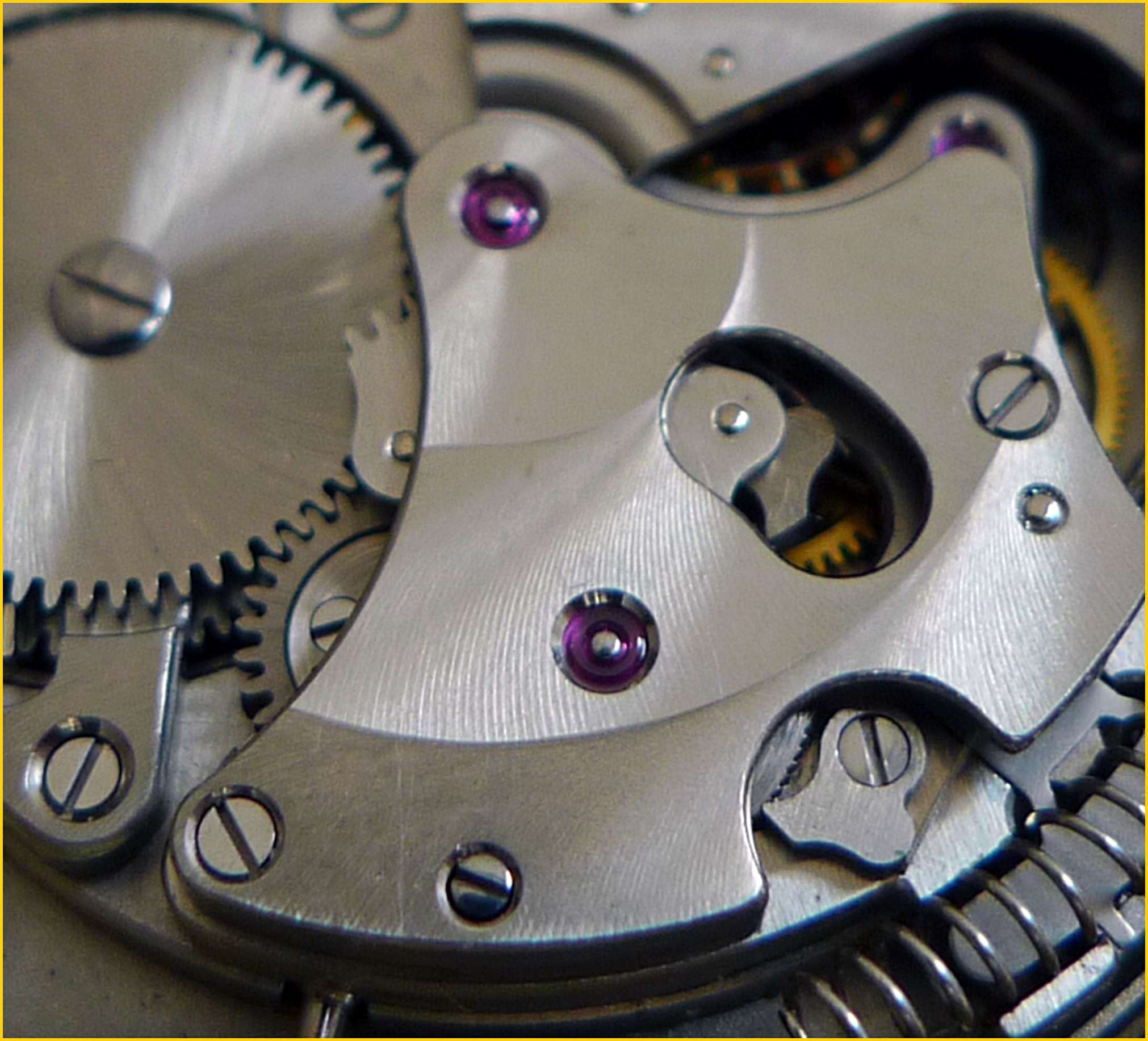
An overall look at the movement, now:
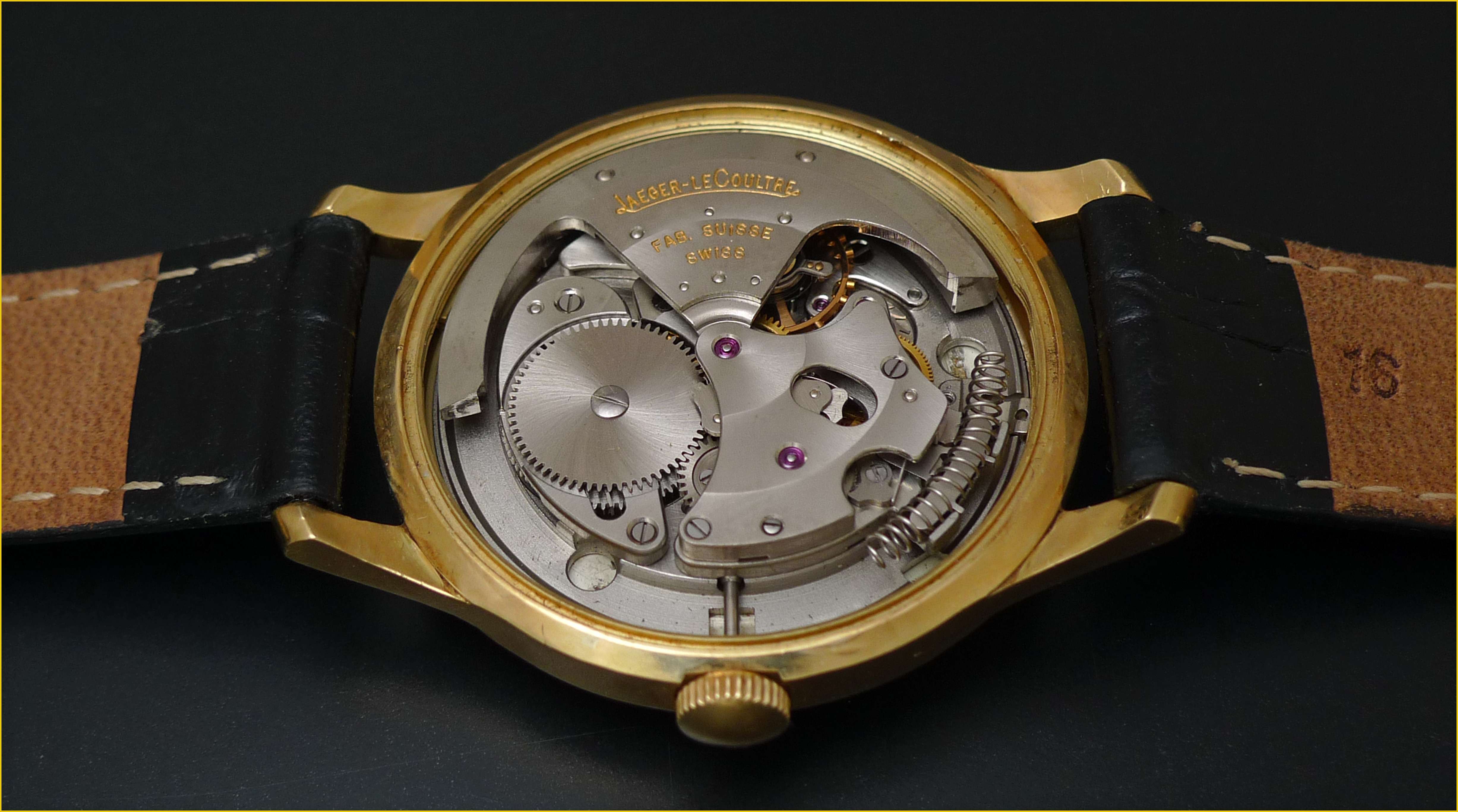
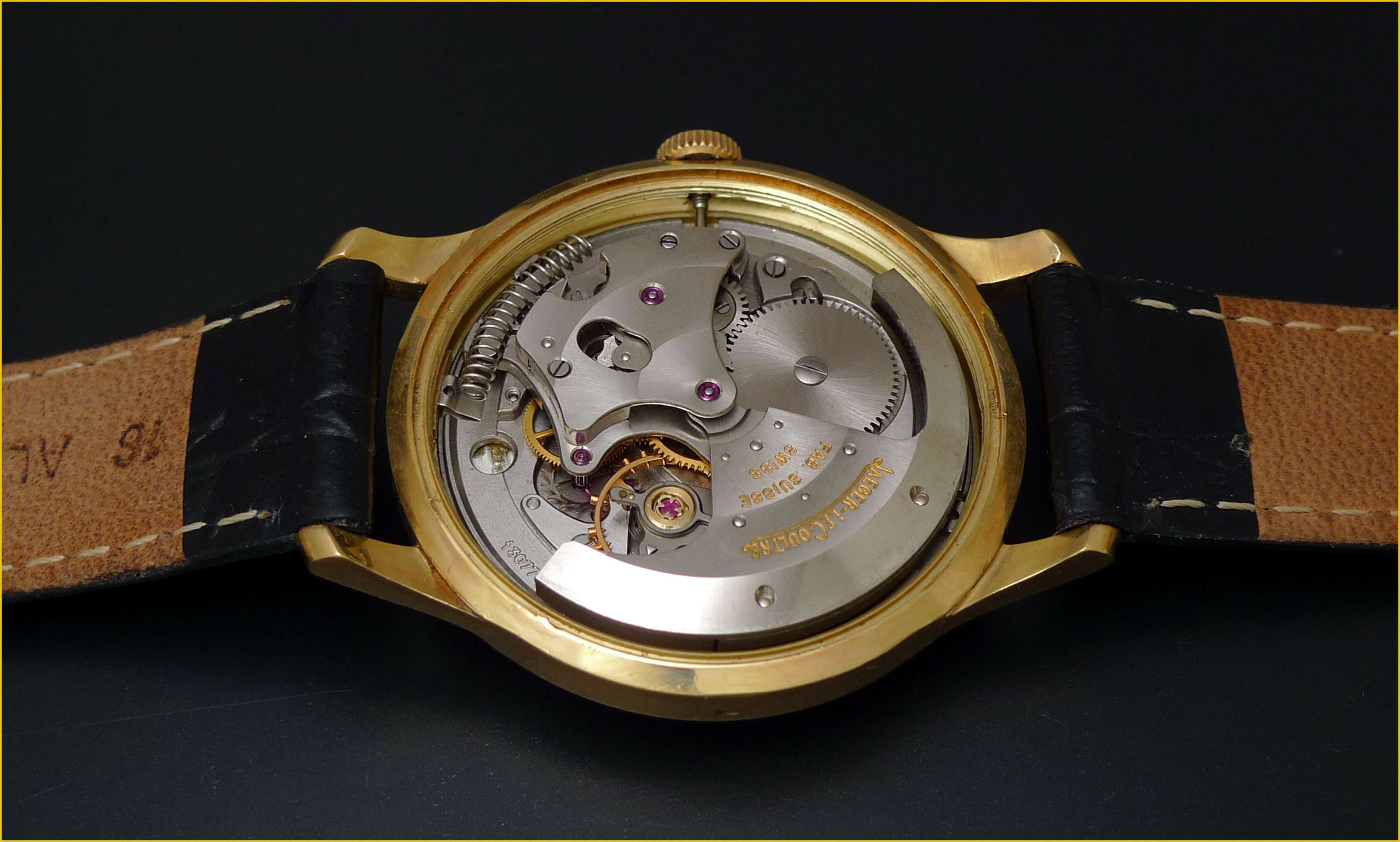
4/General thoughts and conclusion:
I would say that the so called Galaxy Reference E 334 is a mystery to me:
When you check the number of the case, you can date it to July 1959, but the number of the movement dates it to December 1957.
To add to the confusion, it seems that it was not in the JLC catalog before 1960.
According to the Manufacture, the reference E 334 is a pretty rare one, probably produced in less than 100 pieces.
One thing is sure, this is a very elegant and original watch, which compensates its modest size by the important aperture of the dial.
Who said that 35 mm was not a wearable size?
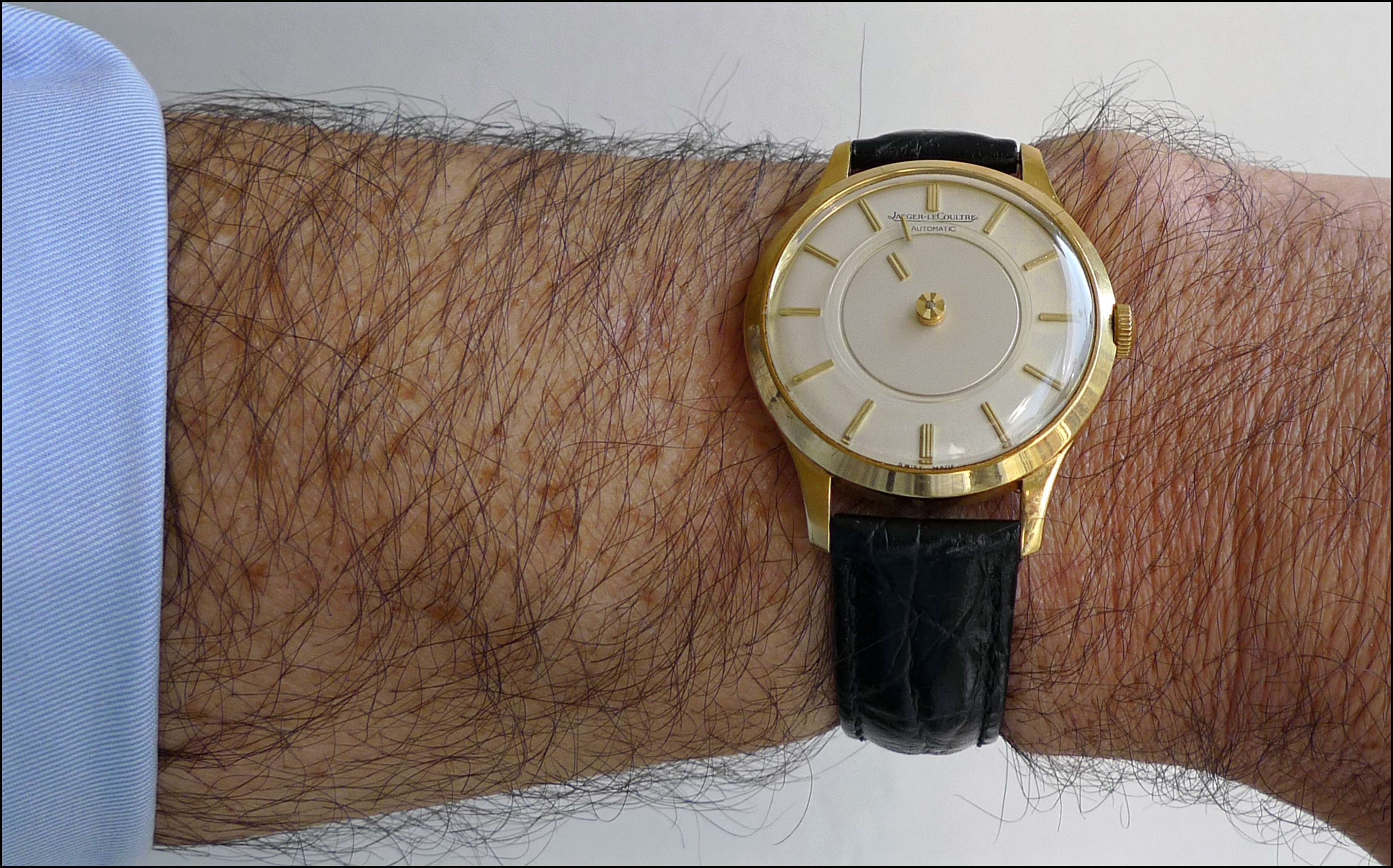
Even for a no colored gold fan like me, such a watch would lead me to make an exception.
One of the several appealing side in JLC's History.
Looking forward to reading your thoughts and comments,
Best,
Nicolas.
This message has been edited by amanico on 2016-05-28 00:47:13 This message has been edited by amanico on 2016-05-28 00:49:04 This message has been edited by amanico on 2016-05-28 03:03:29 This message has been edited by amanico on 2016-05-28 13:00:46
Comments:

watchme May 28th, 2016-09:24
I've long been a fan of mystery dials... even though they are extremely "dated." Years ago I had a swatch with a mystery minute hand. I do think these should be left to history, as I don't think there is much a market for a new one. There are so many other concepts to be developed. Thanks for sh...

amanico May 28th, 2016-09:33
A look alike is not seriously envisageable, indeed. But a modernized version?

blomman Mr Blue May 28th, 2016-13:12
Great review, Nicolas! The mystery dial is a bit of a mystery.... Not sure how many different versions existed but for sure a lot of them! They were at least in the catalog between 1957 - 1965. Here are a few scans from my archive: 1957: Here is the wife's but with black dial. ...




blomman Mr Blue May 29th, 2016-01:07
Did you really think I would... Get away having one of these without giving one to the wife...?! My friend, Padj - one day I will start to share more of my JLC collection... But right now GP keeps me very busy...! Best Blomman

Seeks May 29th, 2016-01:29
haha, nice comment indeed.. need to buy some for the mrs and it is a nice watch to look at too hope to see more of your monster vintage jlc jewels! best regards -- seeks

blomman Mr Blue May 30th, 2016-10:31
Fun, but true! ;) In due time... Hope to have more time for watches along with JR grow up! Best Blomman

hs111 May 30th, 2016-11:41
I somehow knew that you & yours would have doubled up !.. Great scans also, BTW ! A great part of JLC history with the mystery twist.. Yours is really eclectic with these very special & cool "hands". Best, & sincere Congrats to this Duo, hs
0-10-10
Load More Comments
Next Article
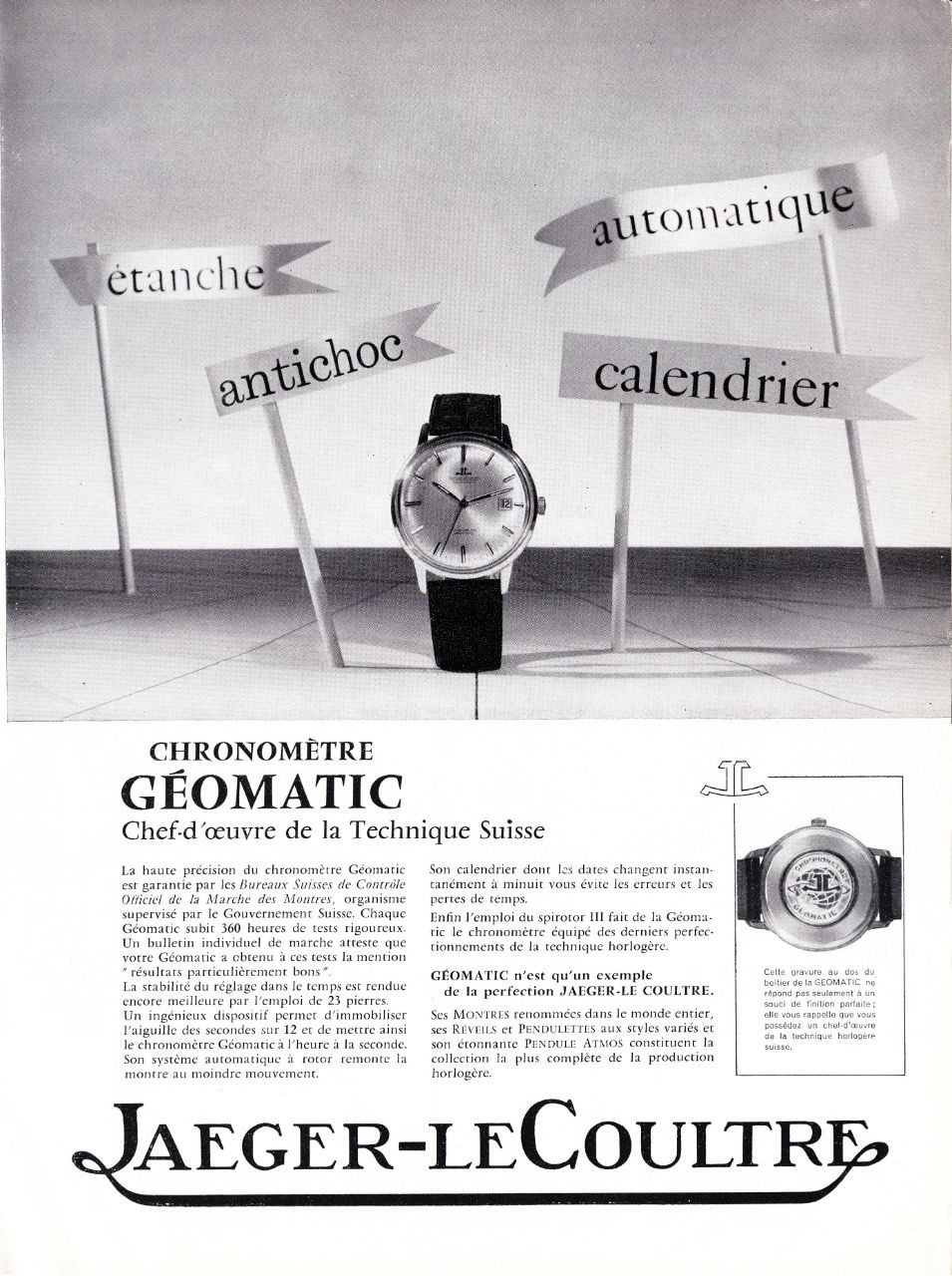
blomman Mr Blue


1961 – 2012 Three Generations of Accuracy
blomman Mr Blue


Friends, We often talk about the complicated or the sports... But I would like to put a light on some of the core criterions of a modern wrist watch: Time, Date, Automatic, Water resistant, Shock resistant and Accuracy. This is what a big part of the watch buying customers wants. Yes, is this order, at least if you look at most of the big Manufactures and their main part of watch production each year.
© 2017 - WatchProZine

